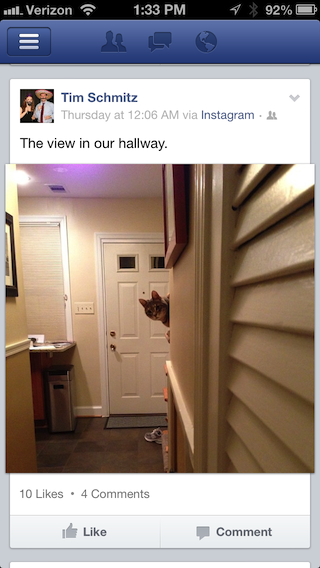Yahoo! generated a lot of buzz recently by announcing they’d no longer allow employees to work from home. It’s a pretty daring change, and one that goes in the opposite direction a lot of companies are moving. If you read my post about why I love working from home, you won’t be surprised that I think Yahoo! is making a big mistake. The new policy is needlessly antagonizing to existing employees, and discouraging to potential hires. It perpetuates a culture of workaholism without a convincing case that face-to-face interaction is always better.
From a memo sent to Yahoo! employees:
To become the absolute best place to work, communication and collaboration will be important, so we need to be working side-by-side. That is why it is critical that we are all present in our offices. Some of the best decisions and insights come from hallway and cafeteria discussions, meeting new people, and impromptu team meetings. Speed and quality are often sacrificed when we work from home. We need to be one Yahoo!, and that starts with physically being together.
Beginning in June, we’re asking all employees with work-from-home arrangements to work in Yahoo! offices. If this impacts you, your management has already been in touch with next steps. And, for the rest of us who occasionally have to stay home for the cable guy, please use your best judgment in the spirit of collaboration. Being a Yahoo isn’t just about your day-to-day job, it is about the interactions and experiences that are only possible in our offices.
If I were a Yahoo! employee, I’d be thinking seriously about whether to stay on. In the tech world, getting everyone onto a “campus” filled with “amenities” like gyms and free food is often a way to get employees to organize more and more of their lives around work. The theory here, spoken or unspoken, is that people won’t mind putting in so many hours if the environment is friendly. The company gets more bang for its salary buck, and gets to brag about their sushi chef in a recruiting brochure. The social pressure that comes along with that atmosphere is bad enough at a company that gives its employees some flexibility. Codifying it into policy makes the situation worse. This new policy sounds like a statement by Yahoo! that they no longer want to work with employees to strike a balance between the office and the rest of their lives.
This new policy won’t help recruiting either. Yahoo! isn’t exactly the darling of the tech industry that they were in the 90s. With a slate of stale and boring products, I have to imagine they have a tough time attracting top talent. High quality engineers, in particular, have a lot of choices about where to work. This new policy is going to make a tough task even tougher. Think about it: If you’re a great developer, why would you choose to work at Yahoo! when there are lot of other exciting companies that offer more flexibility? The tantalizing possibility of “impromptu team meetings” certainly isn’t goign to tip the balance in Yahoo!’s favor.
It would be easier to overlook some of the potential challenges if Yahoo! offered clear evidence that having everyone together in person got better results. Instead, the policy seems informed by outdated management-speak and the unfounded assumption that people are more productive when working in an office. The memo claims that “speed and quality are often sacrificed when we work from home,” but fails to back up the assertion with evidence. At the same time, it lists “impromptu team meetings” as a benefit of working in an office. Now, meetings are useful tools when managed properly, but as a software developer, the idea that an “impromptu team meeting” will help me avoid sacrificing “speed and quality” in my work doesn’t quite compute. If anything, it seems the opposite. Suppose I’m in a groove working on a new feature, and somebody drops by my office for an impromptu meeting. Suddenly, my work has been derailed, and it will take time to get back on track, even after the meeting ends.
Yahoo! doesn’t offer any reason why face-to-face interaction is better than working over email, instant messenger, Skype, or, God help us, the phone. Maybe Yahoo! hasn’t invested in the tools or infrastructure to make remote work as efficient as it could be. There are situations where face-to-face communication is easier and quicker, but there are also cases when it waste time needlessly.
Yahoo! has chosen to expend a great deal of effort rearranging their employees’ lives and getting everyone into a physical office together. They’d would probably be better off worrying about designing and developing great new products.

